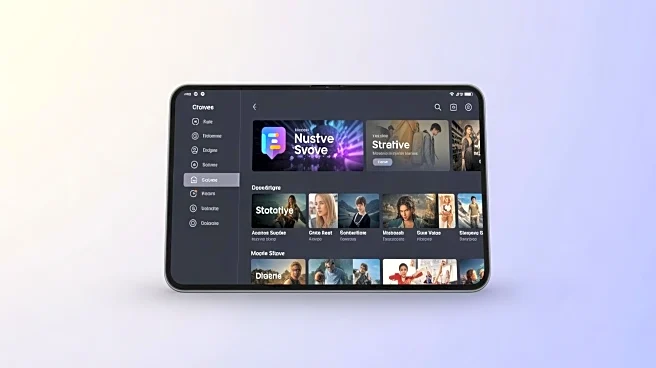What's Happening?
CNN is set to launch a new streaming service, priced at $6.99 per month, on October 28. This move comes three years after Warner Bros Discovery discontinued the CNN+ platform shortly after its debut. The new 'all access' subscription tier will be available
in the U.S., offering live and on-demand video programming, access to all CNN.com articles, and a library of CNN Originals. This initiative is part of Warner Bros Discovery's strategy to mitigate declining cable TV revenue and expand its streaming unit amidst a competitive market dominated by major players like Netflix. CNN CEO Mark Thompson, known for his digital transformation efforts at the New York Times, is spearheading this initiative to improve CNN's ratings and profitability.
Why It's Important?
The launch of CNN's new streaming service is significant as it represents a strategic shift by Warner Bros Discovery to adapt to changing media consumption habits. With cable TV revenues declining, the company is focusing on digital platforms to capture audiences who prefer streaming over traditional television. This move could potentially enhance CNN's competitiveness in the crowded streaming market, offering consumers more choices and potentially increasing its subscriber base. The success of this service could influence other media companies to reevaluate their strategies in the face of evolving viewer preferences.
What's Next?
CNN's new streaming service is expected to attract current pay-TV subscribers, who can access the service at no additional cost. Additionally, consumers can opt for an annual plan at a discounted introductory price. As the service rolls out, CNN will likely monitor subscriber growth and engagement closely to assess its impact on overall revenue and market position. The company may also explore further digital innovations to enhance user experience and content offerings, potentially influencing broader industry trends in media consumption.
Beyond the Headlines
The introduction of CNN's streaming service may have broader implications for the media industry, particularly in terms of digital transformation and content delivery. As traditional media companies increasingly pivot to streaming, there could be shifts in advertising strategies, content production, and distribution models. This evolution may also prompt discussions on the sustainability of cable TV and the future of media consumption, highlighting the need for companies to innovate and adapt to remain relevant.














